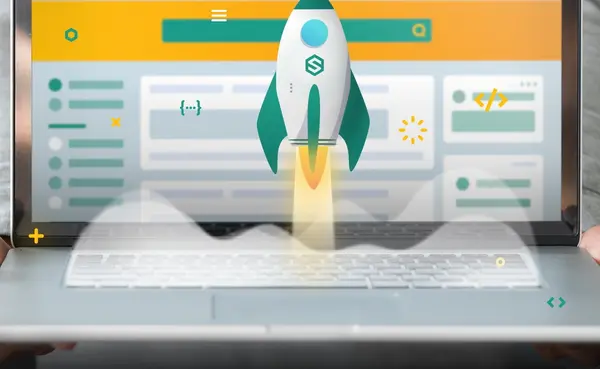0 Comments // Reading Time: 2 min.
Web design is constantly evolving, driven by technological advances and changing user expectations. Here are some trends and technologies that are shaping the future of web design:
1. Artificial intelligence (AI) and automation
AI is increasingly being integrated into web design to create personalized user experiences. Tools such as chatbots and virtual assistants can improve support, while algorithms help to automatically adapt the design based on user data. The automated creation of layouts using AI-driven design tools is also becoming increasingly important.
2. Responsive and adaptive design
While responsive design, which adapts to different screen sizes, is already standard, the concept is evolving into adaptive design. Here, the display is optimized based on user interactions and individual preferences. This ensures that the website not only works on different devices, but also responds to specific user needs.
3. Voice User Interfaces (VUI)
With the growing popularity of voice-controlled devices such as smart speakers, voice user interfaces are becoming more important. Websites need to be optimized for voice search so that users can find relevant information via spoken queries. This requires new design approaches to enable navigation via voice commands.
4. Augmented Reality (AR) and Virtual Reality (VR)
AR and VR open up new possibilities for interactive web design. By integrating 3D content and immersive experiences, users can try out products in a virtual space, for example. These technologies are being used more and more frequently in the e-commerce and education sectors in particular.
5. Dark mode and user-centered design approaches
Dark mode is becoming increasingly popular as it not only improves aesthetics, but is also easy on the eyes and saves energy. User-centric approaches such as design thinking focus on optimizing the user experience through targeted analysis and iterative improvement.
6. Micro-interactions and animations
Micro-interactions - small animations or effects that react to user actions - provide a more lively user experience. They can occur when buttons are clicked or when scrolling, for example, and make the website more interactive and user-friendly.
7. Progressive Web Apps (PWA)
Progressive web apps combine the advantages of websites and mobile apps. They offer offline functionality, fast loading times and a similar user experience to native apps, which makes them particularly attractive for companies.
8. Data protection and security
With increasing awareness of data protection, the focus on the secure processing of user data is becoming more important. Data protection-oriented web design (privacy by design) ensures that websites are designed to protect privacy from the outset.



Comments and ratings